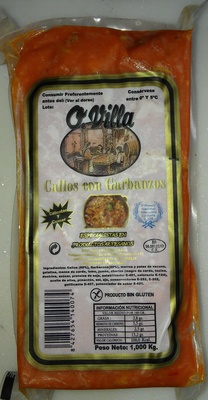Callos con garbanzos - O.Villa - 1.000g
This product page is not complete. You can help to complete it by editing it and adding more data from the photos we have, or by taking more photos using the app for Android or iPhone/iPad. Thank you!
×
Barra-kodea: 8427654140074 (EAN / EAN-13)
Izen arrunta: Plato preparado de garbonzos
Kopurua: 1.000g
Ontziratzea: en:Plastic
Markak: O.Villa
Kategoriak: en:Meals
Etiketak, ziurtagiriak, sariak: es:Premio national artesania culinaria 2008
Manufacturing or processing places: San Martin del Rey Aurelio Asturias
Traceability code: ES 10.10121/O C CE
Dendak: Carrefour
Saltzen diren herrialdeak: Espainia
Matching with your preferences
Ingurumena
Ontziratzea
Transportation
Report a problem
Datuen iturria
Product added on by malikele
Last edit of product page on by packbot.
Produktuaren orria -gatik editatua elcoco, thaialagata.







